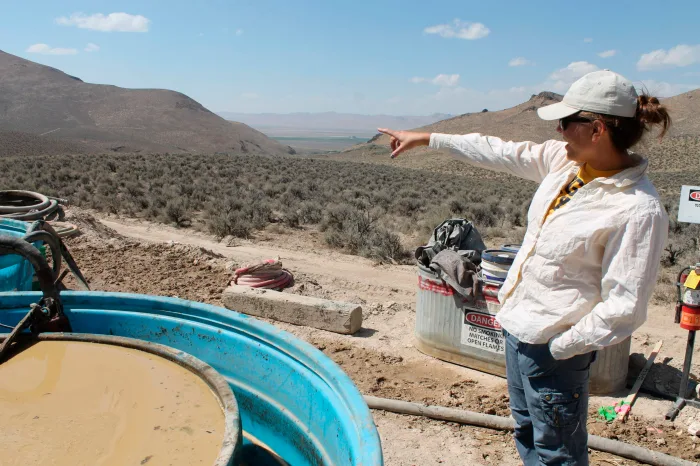Construction begins on controversial lithium mine
Gabriela Aoun Angueira
Grist via ICT

A view from Thacker Pass looking over the Santa Rosa Range near Orovada, Nevada, on March 10, 2022. Lithium Americas Corp. is proposing to build a lithium mine at the site. (Photo by Alex Milan Tracy for Underscore)
Opponents say the Thacker Pass lithium project was rushed in the name of the green transition
Construction began this week on an open-pit mine at the largest lithium deposit in the United States, even as tribes and environmental groups continue a years-long effort to block the project.
Lithium Americas Corp. announced that it began construction on the Thacker Pass lithium project in Humboldt County, Nevada, after the 9th Circuit Court of Appeals denied a request Wednesday by mine opponents to block work.
The Bureau of Land Management approved the $2.2 billion mine project in January 2021. Mining operations would cover 5,000 acres and create a pit deeper than a football field. Lithium is a key component in the batteries of electric vehicles.
Thacker Pass, known as Peehee Mu’huh to the Paiute Shoshone people, is 200 miles north of Reno and less than 40 miles north of the tribal land of the Fort McDermitt Paiute-Shoshone tribe. Tribes opposing the mine say the area has historical, cultural and religious importance and that it was the site of an 1865 massacre of at least 31 Paiute people.
“It’s an important place not only because a terrible massacre occurred, but also because it’s a place where people gather, it’s a place for ceremony, for hunting,” said Michon Eben, tribal historic preservation officer for the Reno Sparks Indian Colony, a government that includes members from the the Paiute, Shoshone and Washoe tribes. The colony is advocating for Peehee Mu’huh to be on the National Register of Historic Places. “It’s really hard to be a tribal member and see our homelands destroyed,” said Eben.
Thacker Pass also comprises thousands of acres of sagebrush and is a nesting ground for the sage grouse and a migration corridor for pronghorn antelope. Environmental groups including the Great Basin Resource Watch and Western Watersheds Project say the mine would cause irreversible ecological damage, and that the project’s impact was not adequately studied.
“It got by the environmental impact statement process in just under a year and I would expect a project of this scale and complexity to take 3 to 5 years,” said John Hadder, director of Great Basin Resource Watch. “That’s sloppy permitting on the side of the federal government.”
Tribes, environmental groups and a cattle rancher are all plaintiffs in a combined case against the Bureau of Land Management, or BLM, and Lithium Nevada, a subsidiary of Lithium Americas. On February 6, a federal judge in Reno ruled that the BLM had complied with federal law in approving the mine, with the exception of one matter regarding waste disposal, which the judge ordered the BLM to revisit. The plaintiffs filed an appeal in the 9th Circuit and an emergency motion to block construction before the appeal hearing. The appeals court rejected the injunction and set the hearing date for June.

The Biden administration has made the transition to electric vehicles a cornerstone of its net-zero strategy. It wants half of new car sales to be electric by 2030, and for the United States to create a domestic electric vehicle supply chain. The administration estimates that demand for lithium and graphite for electric vehicles could increase by as much as 4,000 percent by 2040.
In January, General Motors announced it would invest $650 million in Lithium Americas to develop the Thacker Pass mine, and expected the deal to yield enough lithium for 1 million electric vehicles per year.
Lithium Americas did not respond to a request for comment.
If the appeal fails and the lithium mine goes into operation, Hadder said it sets a bad precedent for how projects can be rushed in the name of the green transition.
“If it’s mining for lithium and other critical minerals, it will fall under the rubric of ‘Lithium is so important that we need to relax some of our environmental standards,’” said Hadder. “That’s a dangerous path that future generations and the environment will pay a price for. I think they’ll look back and say, ‘Oh, that wasn’t a good idea.’”
This article was first published in Grist.






